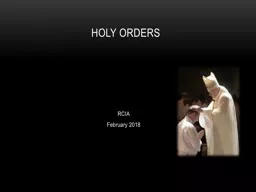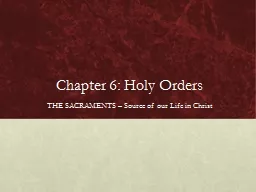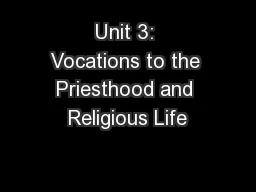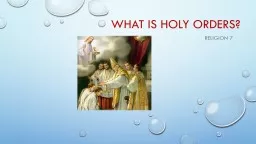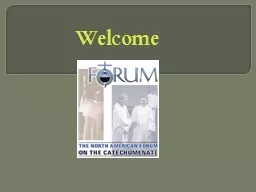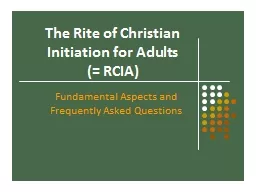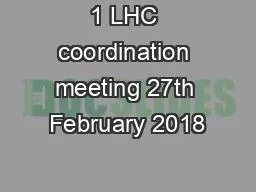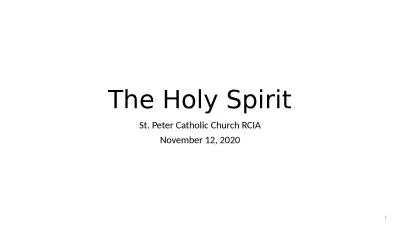PPT-RCIA February 2018 Holy Orders
Author : phoebe-click | Published Date : 2018-10-06
Holy Orders is the sacrament through which the mission entrusted by Christ to his apostles continues to be exercised in the Church until the end of time It is the
Presentation Embed Code
Download Presentation
Download Presentation The PPT/PDF document "RCIA February 2018 Holy Orders" is the property of its rightful owner. Permission is granted to download and print the materials on this website for personal, non-commercial use only, and to display it on your personal computer provided you do not modify the materials and that you retain all copyright notices contained in the materials. By downloading content from our website, you accept the terms of this agreement.
RCIA February 2018 Holy Orders: Transcript
Download Rules Of Document
"RCIA February 2018 Holy Orders"The content belongs to its owner. You may download and print it for personal use, without modification, and keep all copyright notices. By downloading, you agree to these terms.
Related Documents

